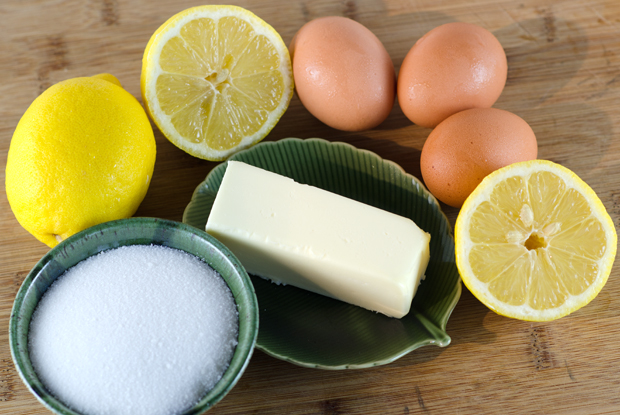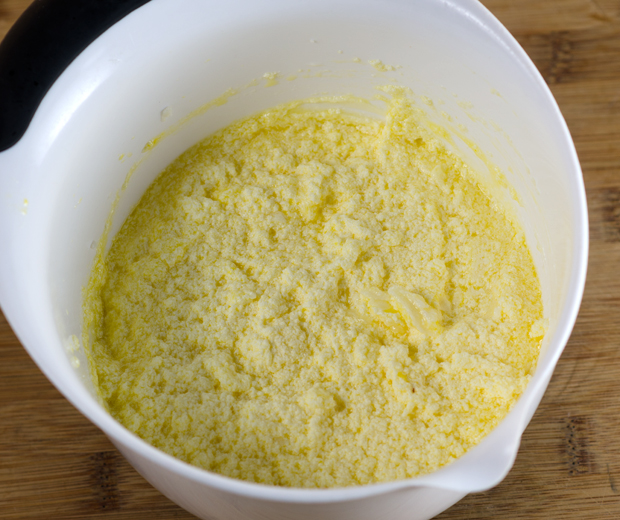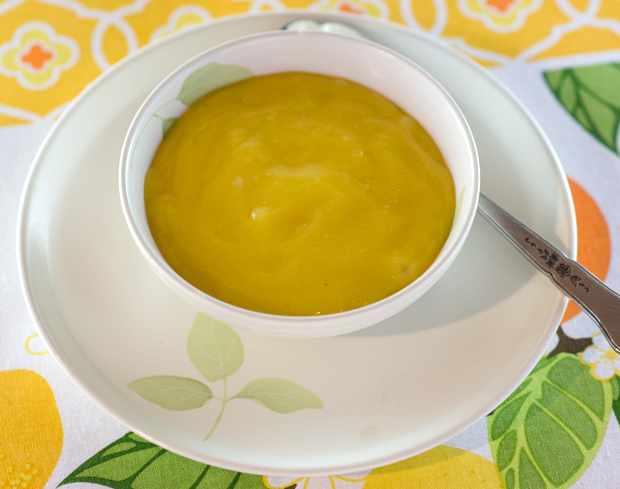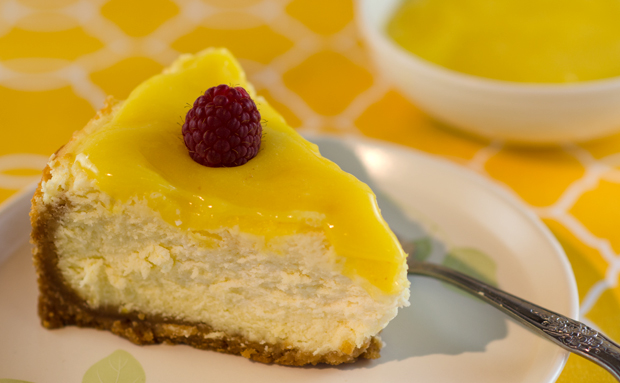A light lemony cheesecake was the finishing touch for our Easter dinner. This easy to make cheesecake has been a favorite of mine for several years. It is a very simple recipe and always turns out great. It can even be made ahead and frozen, just wrap it very well in several layers of plastic and foil.
Lemon curd has long been a tea time favorite for topping for scones and shortbread. Here it adds another intense lemony layer to the cheesecake. The ingredients are very basic, eggs, butter, sugar and the zest and juice of lemon.
This lemon curd recipe was a real revelation for me. As a caterer I made countless, probably thousands of miniature lemon and lime curd tarts for dessert tables. The recipe I used for years combined the lemon juice and rind, beaten eggs and sugar in the top of a double boiler. The mixture was cooked slowly over simmering water until thick and shiny, making sure the curd never came to the boiling point. It was a long and tedious process. As careful as you might try to be, there was always the possibility of getting unattractive little white specks of egg in the curd. That meant the additional step of straining the curd and losing some of the product.
This recipe for lemon curd combines ingredients much in the way when you bake a cake. Room temperature butter and sugar are beaten together until smooth. Next the eggs and the egg yolks are beaten in one at a time. Now the lemon juice is added. Don’t panic, the mixture will appear to be curdled. The butter will start to melt when it’s cooked over low heat and the texture will become silky smooth. The heat is now raised to medium and the curd is cooked until thickened, about 15 minutes.
Never let the mixture come to a boil. Be sure to get your whisk into every corner of the pan. This is when the curd can overcook if it is not stirred and scraped often.
Why does this method work? The egg proteins are coated in fat from the butter. This prevents them from coagulating into hard bits when the lemon juice is introduced.
All I know is that it works. The finished product may not seem to be as thick as you want it but it will continue to thicken after it is refrigerated. This easy recipe makes a lemon curd that is silky smooth, rich and creamy with just the right amount of tartness. Another bonus is that it can be frozen, so make a double batch and enjoy it now and later.
Lemon Cheesecake
Ingredients
For the crust:
- 8 oz. vanilla wafers, finely crushed (2 cups of crumbs)
- 3 T. granulated sugar
- 7 T unsalted butter, melted
For the filling:
- 3 8-oz. packages cream cheese, at room temperature
- 1 c ricotta (regular or low fat)
- 2 T. all-purpose flour
- Table salt
- 1-1/4 c granulated sugar
- 2 Tbs. finely grated lemon zest
- 1 Tbs. pure vanilla extract
- 4 large eggs, at room temperature
For the garnish:
- 3/4 cup lemon curd
Directions for the crust
- Position a rack in the center of the oven and heat the oven to 375°F.
- In a medium bowl, stir together the vanilla wafer crumbs and 3 Tbs. granulated sugar. Mix in the melted butter until the crumbs are evenly moist and clump together slightly. Transfer the mixture to a 9-inch spring form pan and press evenly onto the bottom and about 2 inches up the sides of the pan (to press, use plastic wrap or a flat-bottom measuring cup). Bake until the crust is fragrant and slightly darkened, 9 to 12 minutes. Let the pan cool on a rack. Lower the oven temperature to 300°F.
Directions for filling and baking the cheesecake
- In a stand mixer fitted with the paddle attachment, beat the cream cheese, ricotta, flour, and a pinch of table salt on medium speed, scraping down the sides of the bowl and the paddle frequently, until very smooth and fluffy, about 5 minutes. Make sure the cheese has no lumps. Add the 1-1/4 cups granulated sugar and continue beating until well blended and smooth.
- Add the lemon zest and vanilla, and beat until blended, about 30 seconds. Add the eggs one at a time, beating just until blended. (Don’t overbeat once the eggs have been added or the cheesecake will puff too much and crack as it cools.) Pour the filling into the cooled crust and smooth the top.
- Bake at 300°F until the center jiggles like Jell-O when nudged, 55 to 65 minutes. The cake will be slightly puffed around the edges, and the center will still look moist. Set on a rack and cool completely. Cover and refrigerate until well chilled, at least 8 hours and up to 3 days. The cake can also be frozen at this point for up to 1 month.
- To freeze, put the unmolded, cooled cake on a rimmed baking sheet in the freezer, uncovered, until the top is cold and firm; then wrap it in two layers of plastic and one layer of foil. Thaw overnight in the refrigerator.
Classic Lemon Curd
From Fine Cooking magazine
Makes about 2 cups
Ingredients
- 3 oz. (6 Tbs.) unsalted butter, softened at room temperature
- 1 c sugar
- 2 large eggs
- 2 large egg yolks
- 2/3 c fresh lemon juice
- 1 t. grated lemon zest
Directions
- In a large bowl, beat the butter and sugar with an electric mixer, about 2 min. Slowly add the eggs and yolks. Beat for 1 min. Mix in the lemon juice. The mixture will look curdled, but it will smooth out as it cooks.
- In a medium, heavy-based saucepan, cook the mixture over low heat until it looks smooth. (The curdled appearance disappears as the butter in the mixture melts.) Increase the heat to medium and cook, stirring constantly, until the mixture thickens, about 15 minutes. It should leave a path on the back of a spoon and will read 170°F on a thermometer. Don’t let the mixture boil.
- Remove the curd from the heat; stir in the lemon zest. Transfer the curd to a bowl. Press plastic wrap on the surface of the lemon curd to keep a skin from forming and chill the curd in the refrigerator. The curd will thicken further as it cools. Covered tightly, it will keep in the refrigerator for a week and in the freezer for 2 months.





